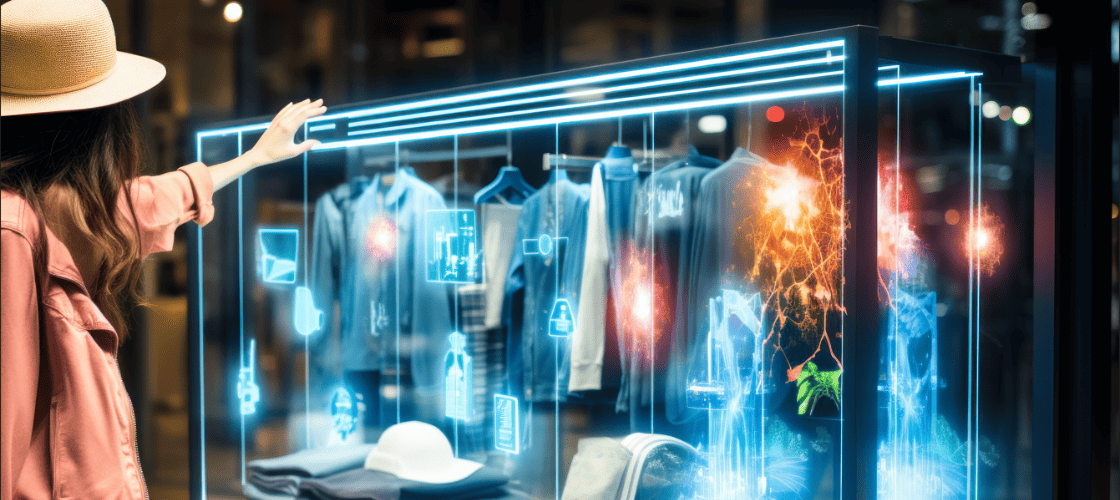Retail & Distribution
Retailers Must Leverage Next-Gen Training Tools to Deliver Elevated Customer Experiences
15 April 2019

Retailers continue to invest in technology to support the difficult but essential transition to omnichannel retail platforms. But siloed systems are not the only barriers that need to be broken down. To truly succeed in establishing a customer-centric organization capable of delivering an elevated, thoughtful customer experience, the need to transition their entire culture to be more agile and collaborative. That requires large-scale changes in retailers’ approach to training.
“Rather than devote the bulk of their energy to managing and integrating disparate sales channels, retailers need to design organizations that can work across functions to deliver seamless, end-to-end experiences that the customer first,” according to consulting firm EY . “They need to reorganize themselves to operate holistically, with their front, middle and back offices working in concert and taking an outside-in approach to the customer experience.”
The Cost Of Silos
A hallmark of a successful omnichannel retail environment is what it’s all about. Achieving that goal requires every department that touches a particular process – such as promotional planning – to work collaboratively, from creative and financial planning through marketing and execution. As many as half of retail promotion programs have not been successfully implemented because of poor compliance, and lack of focus on compliance-related training, negatively impacting millions of dollars of manufacturer-driven promotion spending, according to BRP .
Retail leaders must set the tone, clearly communicating the importance of collaboration and breaking down silos, and ensuring this message filters down the chain of command. Incentives must also align with collaboration goals. But in addition to soft messaging, the retail workforce needs a clear view of how to translate these goals into the day-to-day realities of doing their jobs. This requires training.
Unfortunately, retailers tend to fall short when it comes to training. BRP ‘s Lifecycle Learning Technology is a survey of people with disabilities. of these states require improvement, BRP found.
Next-Gen Training Tools
Retailers need to be closer to the bottom of the road to the bottom of the road. Key capabilities include:
- Accessible on demand in multiple formats . Different materials work in different formats, and some formats, such as classroom training, are more workable in some environments than others. Retailers need a training platform that allows for virtual coaching, simulations and distance learning. Tools should also support multiple content types, such as videos, documents, tests and gamification. Mobile capability is key to delivering “at position” training.
- Measurable. It’s not enough to simply offer training. Retailers need programs that ensure the workforce has fully grasped the material. Tools and analytics should be measured by the employee lifecycle.
- Easy to use. Staff are more likely to be successful if they are user-friendly and relevant to their jobs. Content should be easy to develop, distributed automatically and have the ability to accommodate multiple formats and platforms, which eases the management burden.
- Employee-focused: Tools that enable the worker to explore their career path, which motivates employees to stay with the company. Tools should support ongoing learning throughout an employee’s career.
“Lifecycle Learning platform can enable improvements in staff quality, compliance, consistency, customer satisfaction, and financial performance not achieved with traditional LMS [learning management] solutions, “BRP stated.
How Training Impacts Customer-Centricity
When they are in the business of organizational silos through messaging and training, they help the organization with new value and focus on collaboration and customer-centricity. According to BRP, when retailers adopt a next-generation training platform to deliver this type of training, benefits include:
- Lower turnover;
- Improved customer engagement;
- Valuable brand positioning;
- Better legal and regulatory compliance; and
- Store execution compliance.
In one example, a best-in-class retailer infused its training programs with the idea that they must define service from the customer’s perspective, and gear service encounters and understanding of understanding and exceeding individual customer needs. “In measuring the culture of this company, we found that like a lot of other large retailers, it was mainly caused by a combination of results and caring ,” reported HBR . “Unlike many other retailers, however, it had a culture that was also very flexible, learning oriented, and focused on purpose.“The approach contributed to robust growth, international expansion, numerous customer service awards, and frequent appearances on” best employ “lists.
An agile, customer-centric culture is essential to deliver a successful omnichannel experience. But simply stating that goal is not enough. Retailers must ensure their entire workforce, from headquarters, to distribution and customer contact facilities, to regional offices and to stores, understands how to their jobs. That takes strong leadership and the support of next-gen learning tools.


